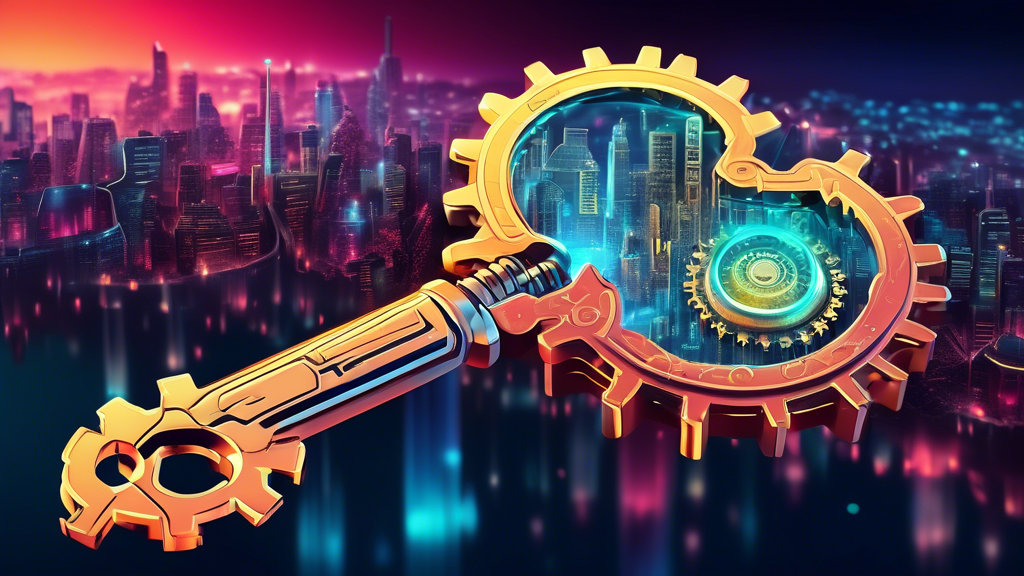What is Intelligent Automation (IA)?
Intelligent automation (IA) marks a significant leap in the automation landscape, going beyond the limitations of traditional, rule-based automation. It represents a sophisticated blend of cutting-edge technologies including artificial intelligence (AI), machine learning (ML), robotic process automation (RPA), and other advanced tools. Unlike conventional automation, IA doesn’t merely automate repetitive tasks, it empowers systems to learn, adapt, and make decisions autonomously, mimicking human intelligence in complex scenarios.
Key Components of Intelligent Automation
To grasp the transformative potential of IA, it’s crucial to understand the core components that enable its intelligence:
-
Robotic Process Automation (RPA):
RPA forms the foundation of IA, automating repetitive, rule-based tasks across various applications. Imagine a software robot that can log into systems, extract data, process information, and complete tasks based on predefined rules—that’s RPA in action. It excels in streamlining workflows, boosting efficiency, and freeing up human workers for more strategic endeavors.
-
Artificial Intelligence (AI):
AI injects IA with the power of cognitive thinking. AI algorithms, particularly machine learning and deep learning, enable systems to analyze vast datasets, detect patterns, and make predictions or decisions without explicit programming. AI’s ability to learn and adapt from experience is central to IA’s ability to handle complex, unpredictable scenarios.
-
Machine Learning (ML):
A subset of AI, machine learning empowers IA with data-driven intelligence. ML algorithms sift through mountains of data, uncovering insights and patterns that would be impossible for humans to detect. This enables IA to learn from past experiences, predict future outcomes, and optimize processes continually, leading to smarter, more effective automation.
-
Natural Language Processing (NLP):
NLP bridges the gap between human language and machine understanding. IA leverages NLP to process text and speech, enabling systems to extract meaning from unstructured data sources like emails, documents, and social media feeds. This empowers IA to automate tasks that require language comprehension, such as customer service interactions or document analysis.
-
Optical Character Recognition (OCR):
OCR empowers IA to convert scanned documents and images into machine-readable text. This unlocks the ability to automate processes involving paper-based documents, such as invoice processing or data entry from forms, further expanding the reach of automation.
Benefits of Implementing Intelligent Automation
The convergence of these technologies allows IA to deliver substantial benefits across diverse industries:
-
Enhanced Efficiency and Productivity:
IA takes over tedious, repetitive tasks, allowing human workers to focus on higher-value activities. This streamlines processes, reduces errors, and boosts overall productivity, leading to faster turnaround times and improved output.
-
Improved Accuracy and Quality:
IA minimizes the risk of human error, delivering higher accuracy in data processing, analysis, and decision-making. This leads to improved quality of work, fewer defects, and a reduction in costly rework.
-
Cost Reduction and Increased ROI:
By automating tasks, IA reduces labor costs, eliminates inefficiencies, and optimizes resource allocation. This leads to significant cost savings and a higher return on investment for businesses embracing IA.
-
Enhanced Customer Experience:
IA can personalize customer interactions, provide faster response times, and resolve issues more effectively. Chatbots powered by NLP can offer 24/7 support, while IA-driven systems can tailor recommendations and offerings based on individual customer preferences, leading to greater satisfaction and loyalty.
-
Data-Driven Insights and Decision Making:
IA’s ability to analyze vast datasets empowers businesses with data-driven insights. By uncovering patterns, trends, and anomalies, IA supports better decision-making, enabling businesses to identify opportunities, mitigate risks, and optimize strategies.
-
Increased Scalability and Agility:
IA solutions can be scaled up or down quickly to accommodate fluctuating workloads. This flexibility enables businesses to respond rapidly to market changes, seasonal demands, or unexpected events, ensuring continuity and resilience in dynamic environments.
Industry Applications of Intelligent Automation
Intelligent automation is not a futuristic concept; it’s actively reshaping industries across the board:
-
Financial Services:
IA automates tasks like fraud detection, risk assessment, loan processing, and customer service interactions. AI-powered chatbots handle customer queries, while ML algorithms analyze market trends to inform investment decisions.
-
Healthcare:
IA is used for patient appointment scheduling, claims processing, medical record management, and diagnostics. AI algorithms assist in image analysis, early disease detection, and personalized treatment plans.
-
Manufacturing:
IA optimizes production processes, manages supply chains, and predicts equipment failures. Robots equipped with AI collaborate with human workers, while ML algorithms optimize resource allocation and production schedules.
-
Retail:
IA personalizes customer shopping experiences, automates inventory management, and optimizes pricing strategies. AI-powered chatbots assist customers with product recommendations and support, while ML algorithms analyze customer data to personalize marketing campaigns.
-
Telecommunications:
IA automates network monitoring, optimizes service delivery, and enhances customer support. AI algorithms detect network anomalies and predict potential outages, while chatbots handle customer inquiries and resolve technical issues.
Implementing Intelligent Automation: Key Considerations
While the benefits of IA are undeniable, successful implementation requires careful planning and consideration:
-
Clearly Define Objectives:
Start by identifying specific processes or areas where IA can deliver the most value. Define measurable objectives and key performance indicators (KPIs) to track progress and demonstrate ROI.
-
Assess Data Readiness:
IA thrives on data. Ensure you have access to relevant, high-quality data to train AI algorithms and fuel the intelligence of your automation solutions. Data cleansing, preparation, and integration are crucial steps.
-
Choose the Right Tools and Technologies:
The market offers a wide array of IA platforms, tools, and technologies. Evaluate your specific needs, technical capabilities, and budget constraints to select the best-fit solutions for your organization.
-
Address Security and Compliance:
IA involves handling sensitive data, making security and compliance paramount. Implement robust security measures to protect data integrity, privacy, and compliance with relevant regulations.
-
Foster a Culture of Collaboration:
IA implementation requires collaboration between IT, business units, and data scientists. Foster a culture of open communication, knowledge sharing, and continuous learning to maximize IA’s potential.
-
Start Small, Scale Gradually:
Begin with a pilot project to test IA’s feasibility and demonstrate value. Learn from the pilot and gradually scale up implementation to other areas of the business as confidence and expertise grow.
The Future of Intelligent Automation
Intelligent automation is not a static endpoint; it’s a continuously evolving field with a promising future. Advancements in AI, ML, and related technologies will fuel IA’s capabilities, leading to even smarter, more adaptable automation solutions.
Here are some trends shaping the future of IA:
-
Hyperautomation:
Expanding automation beyond individual tasks to encompass entire business processes, creating an end-to-end automated ecosystem.
-
Cognitive Automation:
Empowering IA with advanced cognitive abilities, such as reasoning, problem-solving, and decision-making in complex, unstructured environments.
-
AI-Powered Process Mining:
Analyzing event logs and data to automatically discover, monitor, and optimize business processes, driving continuous improvement.
-
The Rise of Citizen Developers:
Empowering business users with no-code or low-code IA platforms, enabling them to build and deploy their own automation solutions without extensive coding knowledge.
As these trends unfold, IA will play an increasingly pivotal role in shaping the future of work, driving innovation, and creating new possibilities for businesses across industries. Embracing IA is not merely about adopting new technology; it’s about reimagining how work gets done, unlocking human potential, and creating a future where businesses thrive in an era of intelligent automation.
Note: Zing Business Systems provides done-for-you solutions for Google Business Profiles or provides ideas and solutions for the DIY business owner.






No comments! Be the first commenter?